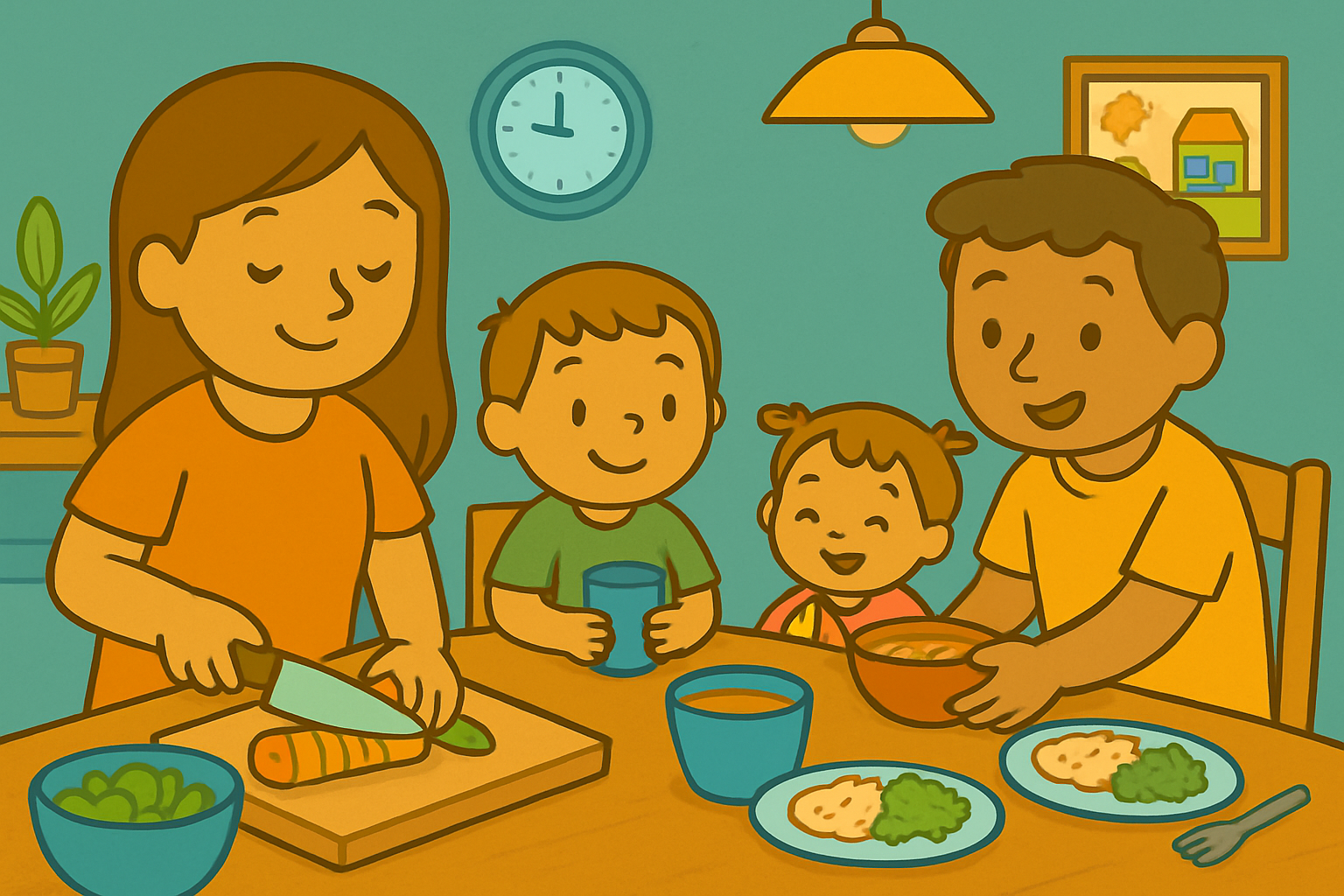How to Simplify Weeknight Routines
How to Simplify Weeknight Routines
Weeknights can feel like a race: school pickup, dinner, baths, homework, clean-up, bedtime. When children sense urgency or pressure, their bodies often respond with resistance — not because they’re misbehaving, but because stress makes transitions harder. Simplifying weeknight routines doesn’t just reduce chaos—it makes space for connection, predictability, and emotional rest after a long day.
The goal isn’t to fit more into the evening. The goal is to make the evening feel smoother. With just a few intentional shifts, families can create a calmer rhythm where children settle more easily and caregivers feel less overwhelmed.
Why Weeknights Feel Difficult
Children often return home holding unprocessed emotions from the day. They may be tired, overstimulated, or unsure how to release what they’ve carried. If they’re immediately met with a list of tasks, their bodies may react with frustration or avoidance.
Common sources of evening stress:
Exhaustion from school or activities
Overwhelming transitions
Hunger or sensory overload
Homework expectations
Sibling conflict
Lack of recovery time
Evenings are emotional — not just logistical.
Begin With Recovery, Not Demands
Before asking children to transition into tasks, they often need a moment to decompress. Just as shown in Building a Calm-Down Routine After School, children regulate best when feelings are acknowledged before instructions are given.
Gentle recovery ideas:
Snack and hydration
Sensory play or quiet activity
Soft music and dim lighting
Outside time or movement
One-on-one “how was today?” moment
A short reset creates readiness for the rest of the evening.
Create a Simple Weeknight Flow
Weeknight structure doesn’t need to be strict — it only needs to feel consistent. Once children understand the sequence, evenings become easier to navigate.
A realistic weeknight rhythm might follow:
Arrival + reset
Snack or hydration
Homework / quiet activity
Dinner
Hygiene / bath
Family connection moment
Bedtime routine
Children begin to “feel” time through rhythm — a principle also reinforced in Teaching Kids the Concept of Time Through Routine.
Managing Homework Without Stress
Homework often creates pressure — especially when energy is low. A smoother approach makes homework feel manageable instead of intimidating.
Try:
Timer for focused work sessions (10–15 mins)
Breaks after each completed section
Homework station with predictable setup
Calm music or white noise
Visual checklist of tasks
“All done” routine to build closure
The priority is regulation — not speed.
Simplifying Dinner Time
Dinner isn’t just nutrition — it’s transition. If dinner feels rushed, children may struggle to settle afterward. A predictable meal rhythm helps children emotionally prepare for bedtime.
Helpful dinner practices:
Light conversation (no correction talk)
Same place settings each night
Water before meals to regulate hunger
Visual timer for meal duration if needed
Gratitude moment or highlight from the day
Dinner becomes grounding when it feels familiar.
Shared Tasks to Reduce Resistance
Routines feel less overwhelming when children participate rather than simply follow directions. Participation builds ownership — and ownership builds cooperation.
Ways to involve kids:
Putting napkins on the table
Choosing music during dinner setup
Helping wash vegetables
Sorting silverware
Family “cleanup countdown” after dinner
Bath prep assistant (“pick the towel!”)
This mirrors ideas found in Family Clean-Up Routines That Build Teamwork, where shared effort leads to smoother evenings.
Visual Tools That Make Evenings Easier
Visual reminders are especially helpful when energy is low. They support memory and reduce repeated instructions.
Useful tools:
Evening checklist or picture chart
Bedtime routine cards
Timer for hygiene routines
“First / next / done” board
Magnetic steps to move along as tasks finish
Visuals calm the brain when words feel overwhelming.
Creating Quick Family Connection Moments
Connection doesn’t require extra time — it simply needs intention. Even three minutes of focused interaction can shift the mood of the evening.
Options:
Joke jar
One-minute cuddle
Quick gratitude sharing
“Rock-paper-scissors” moment
Sibling compliment circle
Short drawing or art time
These rituals are similar to those explored in Family Rituals That Strengthen Sibling Bonds, where bonding is built through shared attention.
Handling Resistance With Compassion
Children may resist tasks not out of defiance — but because their brains are simply out of energy. Responses that invite cooperation rather than demand compliance are more effective.
Helpful responses:
“Let’s do just the first step together.”
“Do you need a movement break first?”
“Would you like to choose the order?”
“Should we reset and try again?”
“Let’s pretend we are robots on a mission.”
Pressure fuels resistance. Play fuels readiness.
Keeping Bedtime Predictable
Bedtime works best when families protect a consistent rhythm — even when earlier parts of the evening fluctuate.
Bedtime flow:
Hygiene routine
Quiet activity (low light)
Reflection or gratitude
Nightlight + bedtime phrase
Consistent sleep window (not exact minute)
This aligns with the core idea from The Role of Consistent Sleep Schedules in Family Harmony — that evening rhythm shapes emotional stability.
When Simple Routines Create Peace
Simplifying weeknights does not mean doing less — it means doing what matters with clarity. Predictable rhythms reduce conflict, reduce overstimulation, and help family members settle at the end of the day.
This content is for educational purposes and is not a substitute for professional medical or psychological advice.
Popular Parenting Articles


